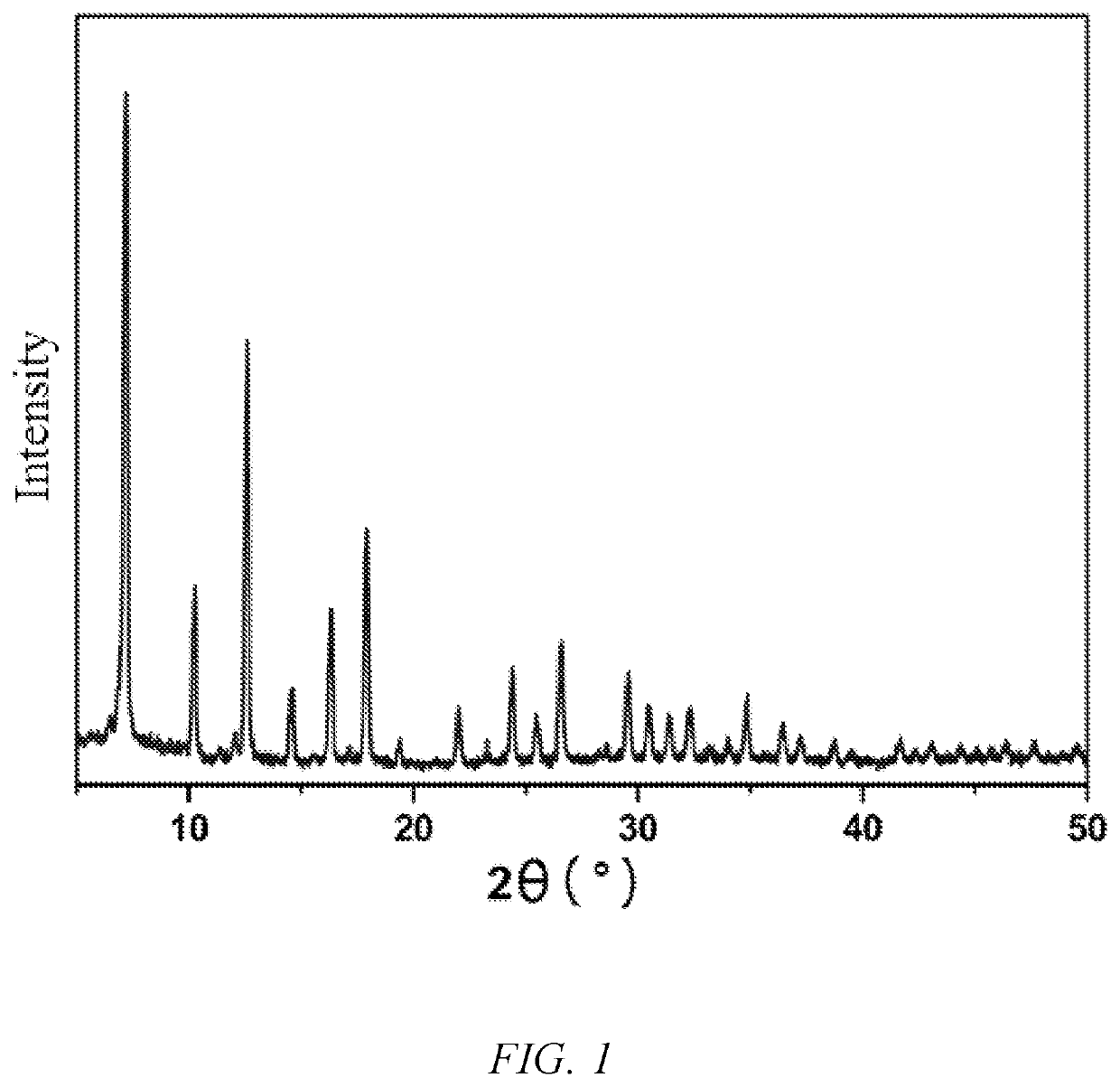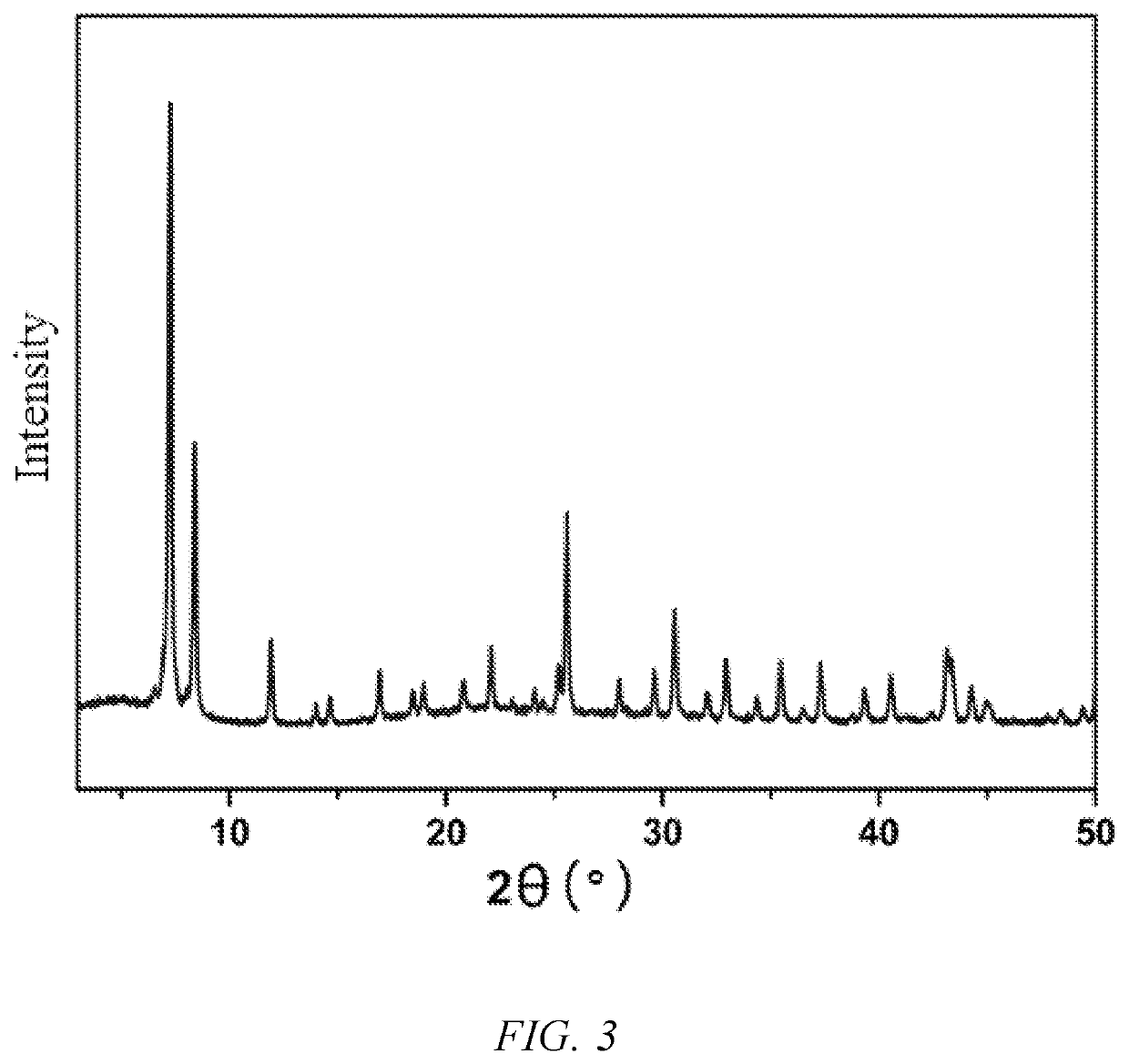Use of ionization radiation source in preparation of porous crystalline material
a technology ionization radiation sources, which is applied in the field of porous crystalline materials, can solve the problems of long synthesis time, low yield, and inability to large-scale production
- Summary
- Abstract
- Description
- Claims
- Application Information
AI Technical Summary
Benefits of technology
Problems solved by technology
Method used
Image
Examples
example 1
of ZIF-8
[0047]29.7 mg of zinc nitrate hexahydrate and 8 mg of 2-methylimidazole were accurately weighed into a 20 mL scintillation flask, added with 1 ml of N,N′-dimethylformamide, and then subjected to ultrasonic treatment until the ligand and the metal salt were dissolved completely, to obtain a clear solution, which was sealed with a sealing film. The sealed sample was irradiated under an electron accelerator for 1600 seconds, and then taken out, and the absorption dose was 1,000 kGy. The colorless crystals produced after irradiation were washed with absolute ethanol, and the finally obtained solid product was air-dried at room temperature.
[0048]The crystal structure of the product was tested by Powder X-ray Diffraction (PXRD), and the results are as shown in FIG. 1.
example 2
of UiO-66
[0049]128.9 mg of zirconium oxychloride octahydrate and 66.5 mg of terephthalic acid were accurately weighed into a 20 mL scintillation flask, added with 10 mL of N,N′-dimethylformamide, and then subjected to ultrasonic treatment until the ligand and the metal salt were dissolved completely, to obtain a clear solution, which was then added with 3 mL of acetic acid and sealed with a sealing film. The sealed sample was placed near and irradiated by a cobalt-60 source for 17 hours, and then taken out, and the absorption dose was 50 kGy. The irradiated white solid was washed twice with N,N′-dimethylformamide and twice with absolute ethanol, and the final product was air-dried at room temperature.
[0050]The crystal structure of the product was tested by Powder X-ray Diffraction (PXRD), and the results are as shown in FIG. 2.
example 3
of UiO-66
[0051]128.9 mg of zirconium oxychloride octahydrate and 66.5 mg of terephthalic acid were accurately weighed into a 20 mL scintillation flask, added with 10 mL of N,N′-dimethylformamide, and then subjected to ultrasonic treatment until the ligand and the metal salt were dissolved completely, to obtain a clear solution, which was then added with 3 mL of acetic acid and sealed with a sealing film. The sealed sample was placed near and irradiated by a cobalt-60 source for 17 hours, and then taken out, and the absorption dose was 100 kGy. The irradiated white solid was washed twice with N,N′-dimethylformamide and twice with absolute ethanol, and the final product was air-dried at room temperature.
[0052]The crystal structure of the product was tested by Powder X-ray Diffraction (PXRD), and the results are as shown in FIG. 3.
PUM
| Property | Measurement | Unit |
|---|---|---|
| time | aaaaa | aaaaa |
| time | aaaaa | aaaaa |
| time | aaaaa | aaaaa |
Abstract
Description
Claims
Application Information
 Login to View More
Login to View More - R&D
- Intellectual Property
- Life Sciences
- Materials
- Tech Scout
- Unparalleled Data Quality
- Higher Quality Content
- 60% Fewer Hallucinations
Browse by: Latest US Patents, China's latest patents, Technical Efficacy Thesaurus, Application Domain, Technology Topic, Popular Technical Reports.
© 2025 PatSnap. All rights reserved.Legal|Privacy policy|Modern Slavery Act Transparency Statement|Sitemap|About US| Contact US: help@patsnap.com



